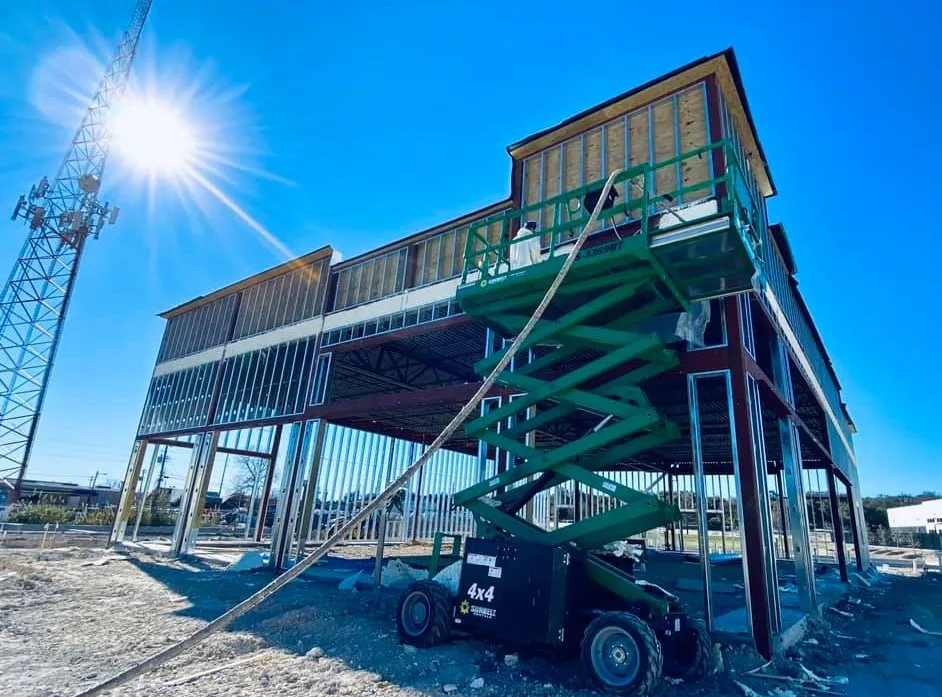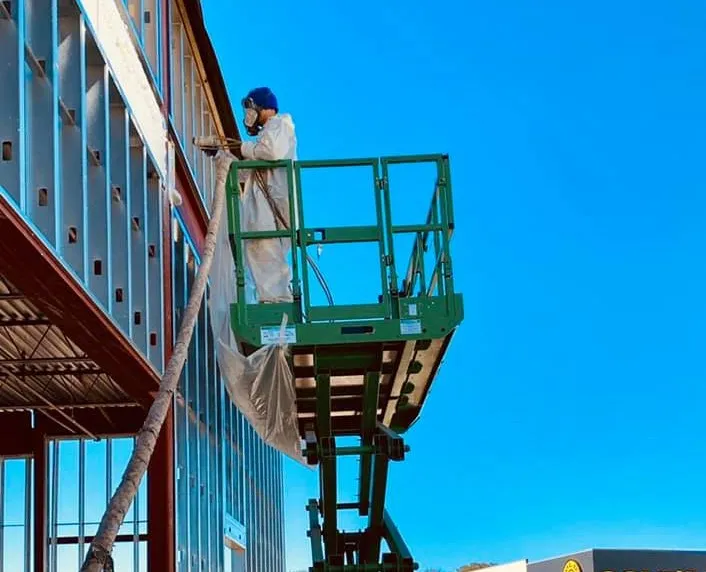Spray foam insulation is widely recognized as the most effective solution for enhancing energy efficiency in commercial buildings. It delivers a high R-value per inch, significantly reduces air leakage, and supports HVAC load reduction. In both new construction and retrofit applications, commercial spray foam insulation offers consistent thermal performance unmatched by traditional materials.
This article explains why spray foam stands out for energy-efficient construction, supported by field experience, performance data, and climate-relevant insights. All technical specifications and product comparisons are presented in table format for clarity. Insights are based on hands-on installation knowledge in real-world building conditions.
Key Advantages of Spray Foam in Commercial Structures
Commercial spray foam insulation integrates thermal resistance and air sealing in a single application. It conforms to irregular surfaces and expands into voids, which prevents gaps commonly found with batt or board insulation. In Central Texas’ mixed-humid climate, this helps maintain stable interior temperatures and reduces over-reliance on cooling systems.
Technical Specifications
| Property | Open Cell Spray Foam | Closed Cell Spray Foam |
|---|---|---|
| R-Value per Inch | 3.6 – 3.9 | 6.0 – 7.0 |
| Air Barrier (at 1″) | No | Yes |
| Vapor Barrier (at 1.5-2″) | No | Yes |
| Water Resistance | Low | High |
| Expansion Rate | 100:1 | 30:1 |
| Structural Reinforcement | No | Yes |
| Sound Dampening | High | Moderate |
Performance Comparison
| Feature | Spray Foam | Fiberglass | Cellulose |
|---|---|---|---|
| Air Sealing | Excellent | Poor | Moderate |
| Moisture Resistance | High (Closed Cell) | Low | Moderate |
| Lifespan | 20+ years | 10-15 years | 10-20 years |
| Installation Complexity | Moderate | Low | Moderate |
| R-Value Stability Over Time | High | Low | Moderate |
Bonus Tip
On metal buildings, closed cell spray foam controls condensation and corrosion far better than fiberglass, which traps moisture and deteriorates over time.
Market Data Validating Spray Foam Effectiveness
- A 2023 ASHRAE report found that buildings insulated with spray foam reduced annual HVAC energy usage by 25-40% compared to those using fiberglass.
- According to the U.S. Department of Energy, air leakage accounts of a building’s heating and cooling losses. Spray foam significantly reduces this loss by sealing all gaps and seams.
- In Texas, commercial buildings using spray foam met 2021 IECC code requirements with fewer HVAC design adjustments than those relying on traditional materials (source: Texas Energy Systems Laboratory).
Regional Considerations for Central Texas
Central Texas faces extreme summer heat and humidity swings. Spray foam insulation supports climate-specific goals:
- Controls vapor drive from humid outdoor air
- Reduces cooling loads in long summer months
- Improves indoor air quality by minimizing airborne pollutant entry
Buildings with unvented attics benefit from spray foam under the roof deck, keeping mechanical systems within the conditioned envelope.

Things to Consider Before Making a Decision
- Building Envelope Goals: Decide if you need full envelope insulation or partial upgrades. Spray foam may not be cost-effective for limited-area retrofits.
- Code Compliance: Verify local energy codes and vapor barrier requirements. Closed cell spray foam can meet multiple code functions at once.
- Fire Rating: In commercial settings, spray foam often requires a thermal or ignition barrier. Verify with your local code authority.
- Access and Substrate Type: Surfaces must be clean and dry. Adhesion varies by substrate.
- Budget Planning: Initial installation is higher in cost, but long-term energy savings and reduced HVAC equipment needs offset investment.
Bonus Tip
In retrofit projects, removing old insulation and sealing penetrations before applying spray foam significantly improves performance.
Key Commercial Insulation Services from Stellrr
Stellrr delivers high-performance insulation solutions that align with commercial energy goals:
- Closed Cell Insulation: Dense, moisture-resistant insulation with high R-value for structural areas and roofs.
- Open Cell Insulation: Expands to fill gaps, ideal for interior walls where soundproofing and flexibility matter.
- Commercial Building Insulation: Designed for offices, warehouses, schools, and retail structures needing envelope upgrades.
- Insulation Removal: Clears outdated or damaged insulation before modern systems are installed.
Common Questions Before Choosing Spray Foam
How thick should commercial spray foam insulation be?
Closed cell typically ranges from 2-3 inches on walls and up to 5 inches on roofs. Open cell is usually applied at 3.5″ to 5.5″ depending on cavity depth.
Can spray foam be used on existing buildings?
Yes. It can be applied to interior surfaces or in attic/crawl spaces. Removal of old materials may be required for performance.
Is spray foam safe in occupied spaces?
After proper curing and ventilation, it is inert. Most off-gassing happens within the first 24 hours.
What maintenance does spray foam require?
None. It remains in place without settling or degrading under normal conditions.
Get Expert Insulation Guidance
For projects requiring energy efficiency, thermal control, and long-term savings, spray foam insulation delivers measurable performance. Stellrr has extensive experience installing spray foam in commercial environments throughout Central Texas.
Contact for guidance or project consultation:
Stellrr
Email: info@stellrr.com
Phone: (512) 710-2839
FAQs
How does spray foam compare to rigid foam boards?
Spray foam creates a continuous barrier with no seams or joints. Rigid boards require mechanical fastening and joint sealing, which increases labor and potential for air leaks.
Will spray foam cause moisture problems in humid climates?
Closed cell foam resists vapor and moisture intrusion. Proper application and thickness prevent condensation issues in humid regions like Central Texas.
Can lighting or wiring be run through spray foamed cavities?
Yes, but placement should be finalized before installation. Retrofit work requires careful routing around foam areas.
Does spray foam affect indoor air quality?
It helps improve air quality by sealing out pollutants and allergens. Proper curing is essential before space reoccupation.
What are typical return-on-investment timelines?
Most commercial properties recover insulation costs in 3-6 years through energy savings and HVAC downsizing.





